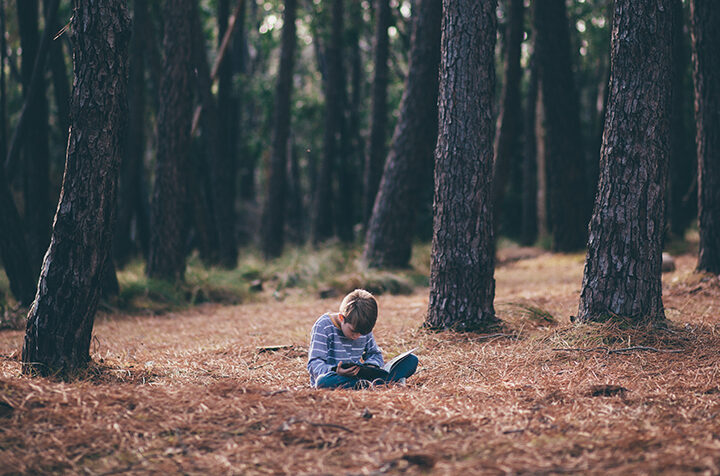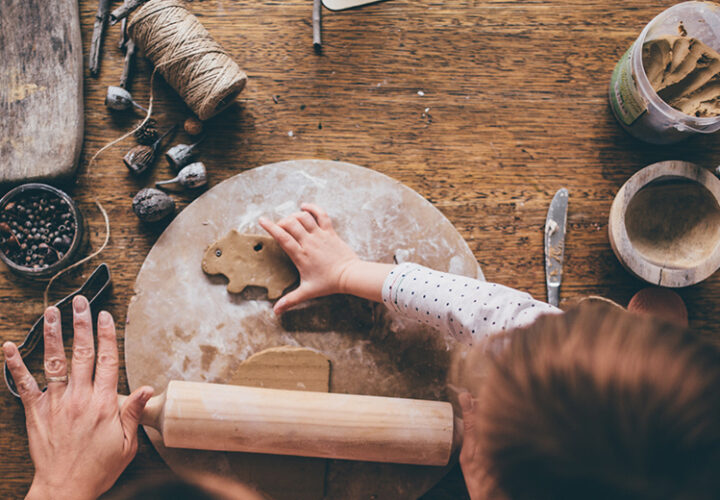DIY Lavender Sachets – By Xan Holyoak
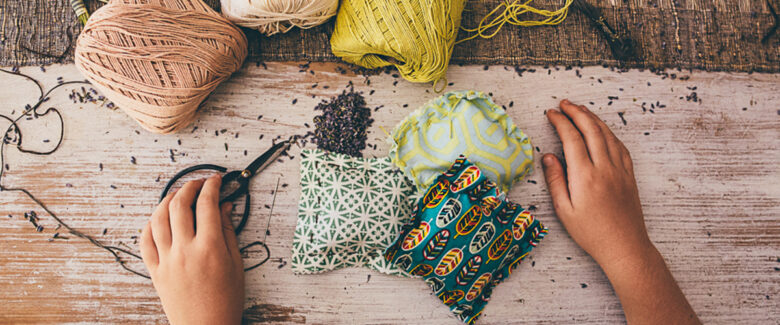
There’s something special about making things by hand, creating a one-of-a-kind piece with its own personality, quirks, and characteristics.
Craft activities using sensory materials offer a welcome opportunity to slow down and share quiet time with children. While sewing may be a dying art (isn’t as common as it once used to be), needlework develops dexterity, encourages creativity, supports mindfulness and delivers a sense of pride and fulfilment in learning something new. Lavender sachets are simple to create and can be used to deter pantry moths, encourage relaxation and restful sleep or delicately scent your wardrobe. If you don’t have a lavender bush in your yard, explore your neighbourhood, including local parks and gardens. Cut the flowers at the base of the stem and dry them in the sun. You can also ask for pre-dried lavender at many bulk food or health stores.
What you’ll need
- Cotton fabric, up-cycled if possible
- Sewing needle with large eye
- Embroidery thread
- Chopped dried lavender flower (50 grams for three sachets)
- Small sewing scissors
- Fabric scissors
- Pinking shears
- Dressmaker pins
- Spoon or scoop for filling sachets
- Iron
Optional extras
- Additional embroidery thread for colour variations and/or embellishments
- Decorative buttons, ribbons or beads
- Other dried herbs
Steps
Basic sachet using a running stitch
- Cut two square pieces of cotton fabric around 12cms each.
- With the squares together, printed sides facing out, iron your fabric and secure it in the centre using a dressmaker pin.
- With your pinking shears, trim all four edges by about 1cm. The zigzag edge will prevent fraying and your square will now have uniform sides and corners, ready for stitching.
- Thread your needle and meet the ends of your embroidery thread to tie a knot, leaving a 2cm tail.
- Allowing a 1cm gap between your stitching and the zigzagged edge, begin to sew using a running stitch.
- Once you have sewn three sides, knot your stitching and snip your needle-free, or if there remains ample thread on your needle for completing the fourth side, then allow needle and thread to slacken while you fill your sachet.
- Remove your dressmaker pin and using the spoon, carefully fill the pocket with the dried lavender, packing it down as you go. Leave a 2cm space at the top.
- Take up your needle again, continue with running stitch, and sew your fourth side closed. Meet up with your starting stitch and knot.
- Snip thread leaving a little tail if desired and gently massage your sachet to evenly distribute the lavender.
Embellishments
Add your own unique touch by experimenting with other stitching techniques. Blanket stitch works nicely along the edges and can be used instead of pinking shears. Embroidery adds a decorative finish to plain fabric or enhances areas of design within printed fabric. Buttons, beads and ribbon also create lovely effects. It’s best to work these embellishments onto your squares before they are pinned together. You can also choose to fill your sachet with other fragrant herbs like rosemary or chamomile.

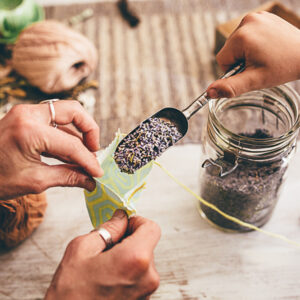
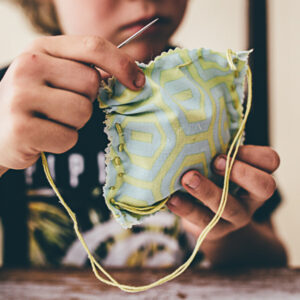
Check out our blog for more nature craft ideas including Lavender playdough, nature weaving, handmade clay decorations, and DIY seedling pots. Images by Jason Tyndall, Nature Play SA.

